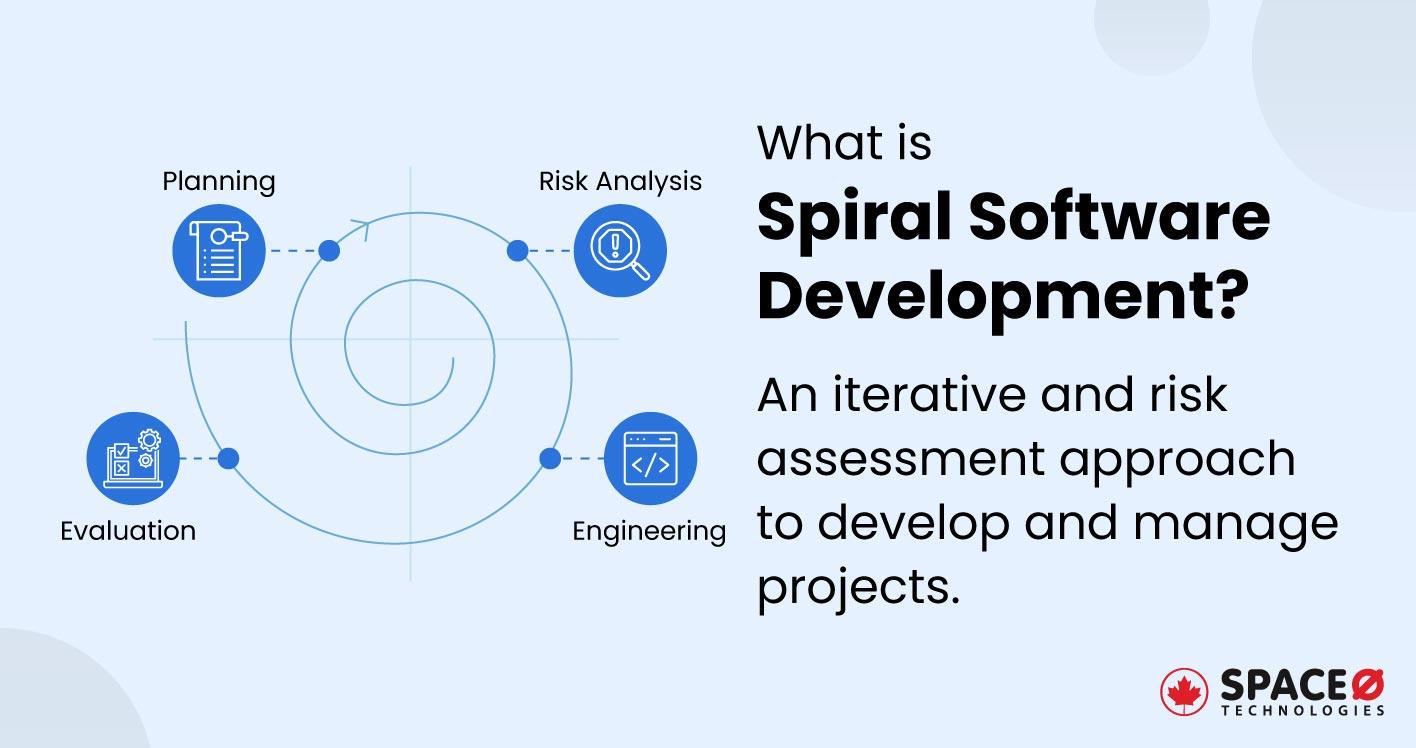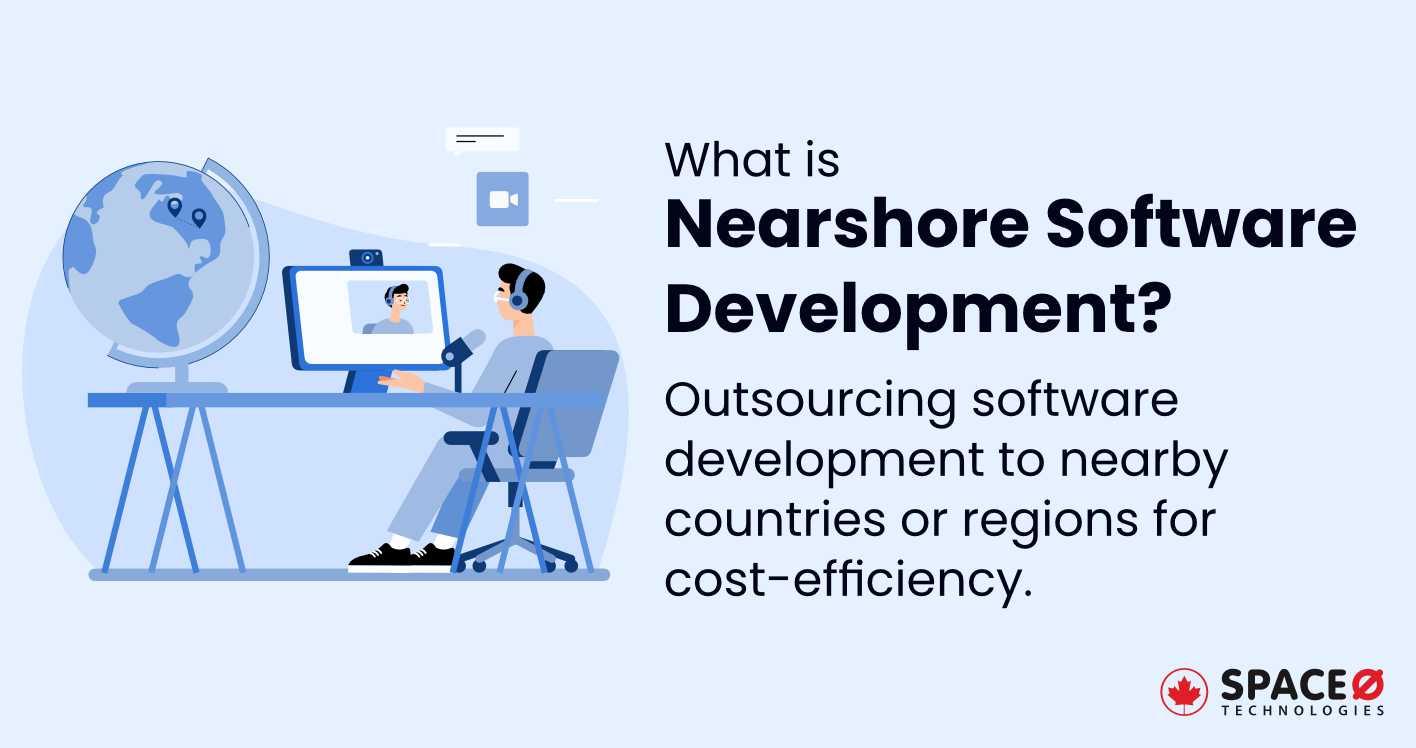
What is Spiral Software Development? [A Brief Explanation]
Table of Contents
What is Spiral Software Development?
Spiral software development refers to an approach that combines an interactive model and a waterfall model to build software apps. Often, spiral software development is referred to as the spiral model. The spiral model is suitable for high-risk projects with unclear goals, changing requirements, and unknown risks.
Most leading software development firm chooses the spiral software development life cycle when the projects are big and expensive with high risks.
You can also look at our guide on how to create software using the spiral model. The spiral software development process is explained in depth in the guide. Now, let’s talk about the spiral model’s stages.
4 Main Phases of Spiral Model for Software Development
Here are the core 4 phases of the spiral model which are used to create software solutions from scratch. Let’s understand the following phases in detail.
| Phase | Description |
|---|---|
| Planning | In the planning phase of the spiral model, initial goals are set. Project objectives, business requirements, constraints, and alternatives are identified. Next, you need to create a detailed plan to specify tasks for execution. Cost and time estimates are also created. By laying the foundation for baseline spiral cycles, you create proper planning. |
| Risk Analysis | In the spiral model, risk analysis follows planning. During this phase, potential risks are identified and assessed. Strategies are formulated to manage these risks. Essentially, you rectify what could go wrong and plan mitigations. The goal is to minimize project failures by addressing risks early. |
| Engineering | In this next phase of the spiral model, the actual development takes place, and prototype building gets done. Here, the code is written, tested, and integrated. Conceptual design elements are also implemented during this phase. Essentially, the plans and risk mitigations from earlier stages come to life. At this point, your main goal is to make a software product that works. |
| Evaluation | Each spiral cycle ends with the evaluation phase. The developed product or features are evaluated at this stage. After that, send the finished product to clients for assessment and comments. Based on this, modifications for the following cycle are planned and carried out for quick development. By often releasing new versions, it is hoped that the project will achieve its quality objectives at this point. |
Hence, after knowing the phases of the spiral development model for a software project, let’s discuss the advantages of the spiral model. As said the spiral model combines waterfall and iterative development, so you might be curious to learn about the waterfall model. Check our short article on what is waterfall software development.
5 Advantages of the Spiral Software Development Model
Here are the advantages of the spiral model of software development.
Update and Make Changes at Any Stage of Development
The spiral model is built in a way that makes executing changes in project scope or requirements easy at any stage. Whether you are dealing with new client requirements or evolving technical changes, the spiral model allows you to make timely revisions without derailing the project’s progress. The spiral model allows for easy changes at any stage of development.
This flexibility sets it apart from other top software development methodologies like Waterfall, Agile, and Scrum. In these models, altering requirements mid-way can be challenging. In contrast, the spiral model accommodates evolving client needs and technical updates without causing project delays.
Identify and Mitigate Risks at the Early Stage of Development
The spiral model places a strong emphasis on risk assessment right from the early stages. By identifying, analyzing, and prioritizing risks, it becomes easy to prevent project failure. So, you come up with ways to lower risks to make it less likely that the project will fail.
Update Your Software from Regular Customer Feedback
The spiral model involves iterative development cycles that involve clients or end users at various points. In this spiral approach, everything is taken care of, from reliable feedback loops to in-the-moment evaluation. The continuing work ensures that software not only achieves its technical objectives but also fulfills user expectations.
Suitable for Projects of All Sizes
The spiral model is scalable which helps you to accommodate projects with diverse requirements and complexities. Whether you are developing a small application with a tight budget or a large enterprise system with multiple stakeholders, the model adjusts to fit your specific needs.
Prioritize High-risk Elements for Development
The spiral model’s focus on high-risk components is among its best features.
By identifying and labelling risky components, you can reduce the chances of project failure. The project will move closer to completion more quickly with this strategy.
However, if you want a simple and effective method to create solutions, read this article on lean software development. This method even focuses on the client feedback that helps you to develop software which meets end-users’ requirements.
Let’s learn about the spiral model’s drawbacks now that we are aware of its benefits.
Limitations of the Spiral Software Development Model
Need for an Experienced and Skilled Technical Team
The spiral model is a way to do work that includes planning and risk analysis. This makes the spiral approach complicated. To implement perfectly, you need a project manager and an experienced development team who are well-versed technically to make sure things go smoothly and help you in better risk management.
Requires a Big Budget for Project Development
The cost of the whole project goes up as the requirements for continuous planning, risk assessment, and client contact add up. Because of these things, this method isn’t as good for startups or projects with small funds. With this plan, there is a chance that the costs go up.
In conclusion, the spiral model is flexible and can be changed, which makes it great for projects with changing needs. This method, which focuses on managing risks, cuts down on delays and forces you to make projects that are more involved.
All our projects are secured by NDA
100% Secure. Zero Spam
*All your data will remain strictly confidential.
Trusted by


Bashar Anabtawi
Canada
“I was mostly happy with the high level of experience and professionalism of the various teams that worked on my project. Not only they clearly understood my exact technical requirements but even suggested better ways in doing them. The Communication tools that were used were excellent and easy. And finally and most importantly, the interaction, follow up and support from the top management was great. Space-O not delivered a high quality product but exceeded my expectations! I would definitely hire them again for future jobs!”

Canada Office
2 County Court Blvd., Suite 400,
Brampton, Ontario L6W 3W8
Phone: +1 (437) 488-7337
Email: sales@spaceo.ca




